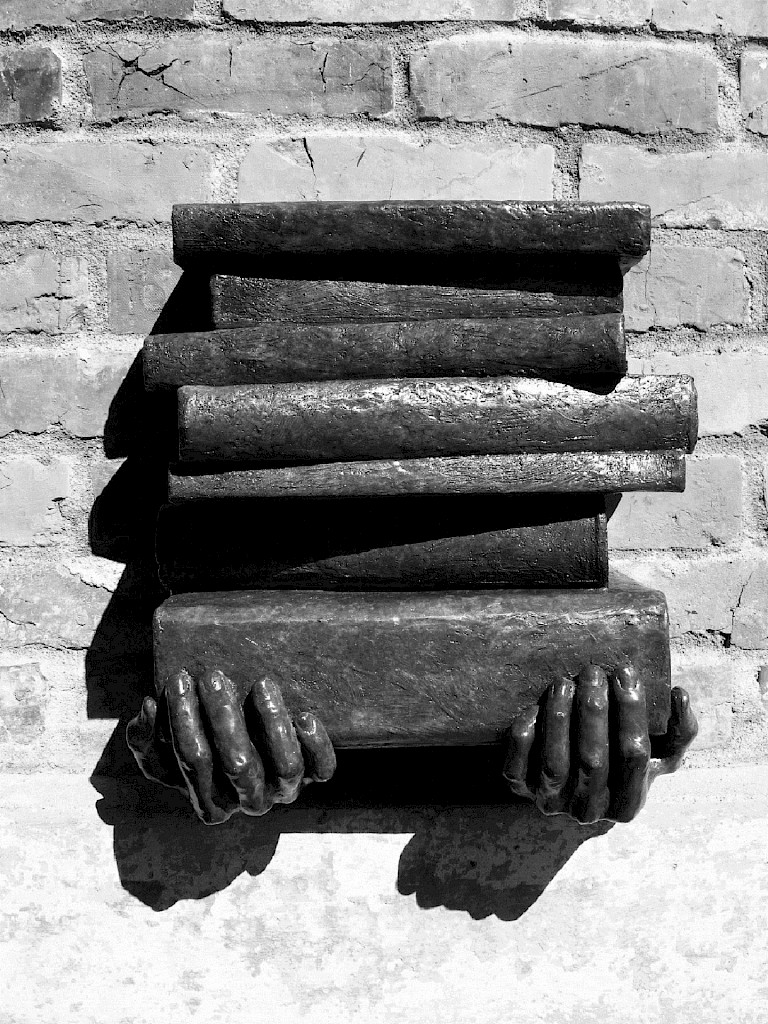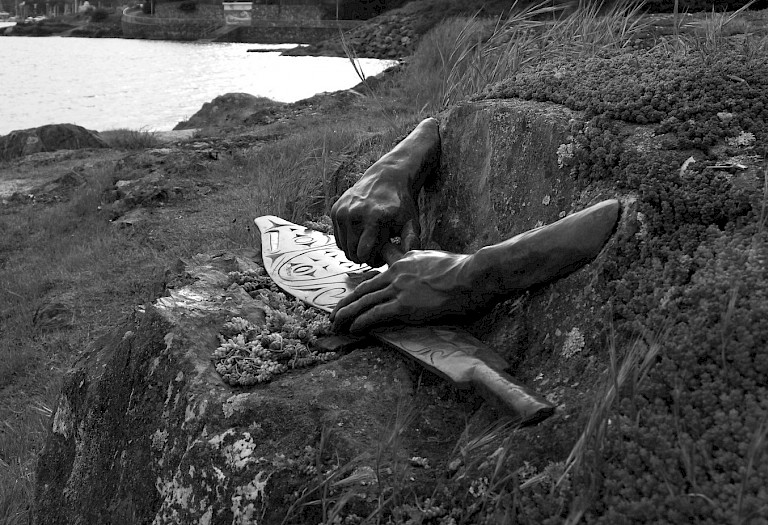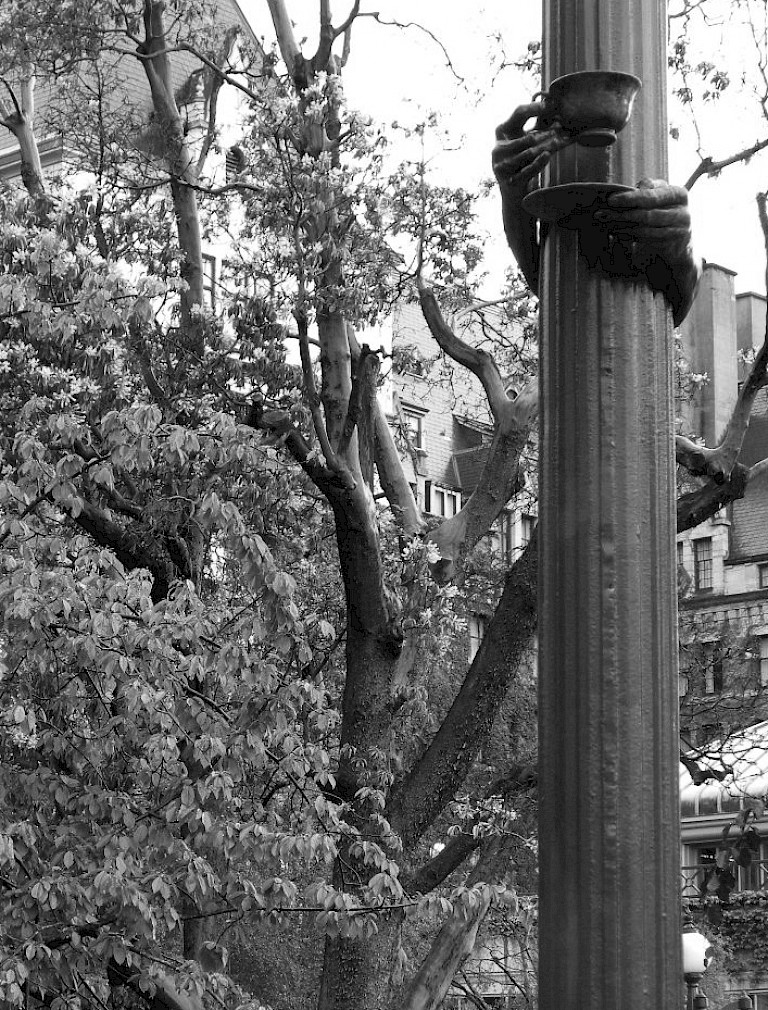



What the project has going for it is that it is a moderately interactive, multi-sited permanent installation that illustrates a broad cultural swath and doesn’t shy away from exploring controversial topics.
Like many cities, Victoria has a checkered history of success with public art projects, “They’ve either been quietly appreciated or hotly contested,” says Nichola Reddington, the city’s Community Recreation Coordinator in the Arts & Culture division of the Parks, Recreation, and Culture Department. The Hands of Time Project has had a very different impact.
“There is a great sense of community ownership with the work,” says Reddington. This ownership takes many forms: self-formed groups of locals regularly check up on the works and telephone Reddington’s staff when there’s a problem. Feedback, via letters and internet, from both residents and visitors, has been vast.
Placed throughout the city, the works together form an interactive treasure hunt. According to Reddington, people find the “search” for all twelve sculptures to be an engaging interactive element that allows the public to approach the artwork through a common framework and unimpeded by art-world interpretations.
Reddington also points to the artistic risks the artist took in depicting the difficult passage of Victoria’s history, rather than sticking to safe renderings of sanitized history. Przybille consulted with numerous communities, including local indigenous groups, in executing her commission.
“The artist tells a very accurate and honest—but respectful—reflection of our past, and embraces the whole community,” says Reddington. For example, two sculptures depict the canoe paddle carving and basket-making crafts of the First Nations tribes of the area. Another statue commemorates Chinese contributions to the region’s history.
While admittedly not groundbreaking work, the artist struck a tricky balance, rare in public art. The works, rendered in bronze with some stainless steel elements, adopt a conventional vernacular familiar to virtually all viewers as a public art idiom. The imagery depicted doesn’t shy away from controversial subjects, yet treats them with a sensitivity and universality calculated to not raise alarms. Finally, by placing smaller, more conventional sculptures in a site-specific, interactive pattern, the artist gives an expanded audience a new appreciation for public art that goes beyond ornamentation and toward a more challenging and shared experience.
All copyright belongs to Shanghai Academy of Fine Arts, Shanghai University.



